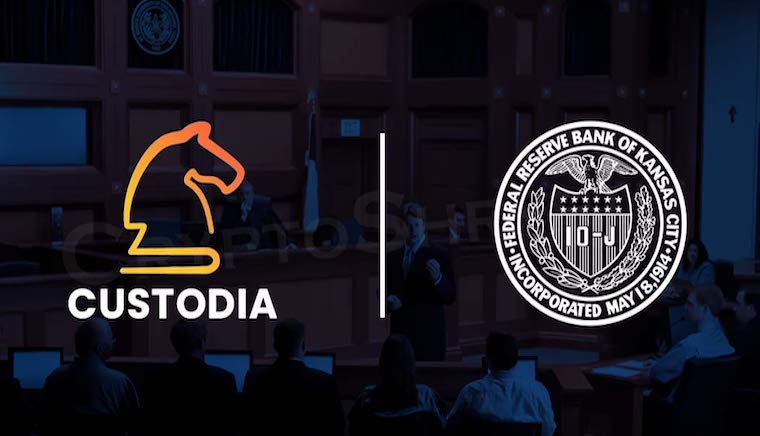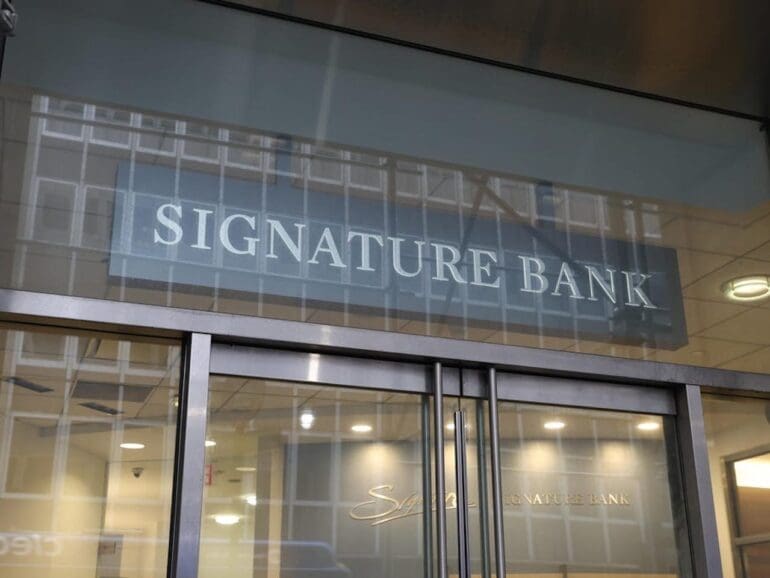Despite the consensus (notwithstanding the opinions of a few of congress) that the closure of three banks within a week was a failure of the banking system, not due to crypto, the news has been dragged into the DeFi stage.
The closure of Signature bank on Sunday marked a second blow to crypto companies looking for federally regulated banking services following the failure of Silvergate.
Both banks had vied to be crypto entities’ financial institutions of choice in a market with minimal access to regulated banking services.
RELATED: Silvergate: Another fall from the CeFi house of cards
Silvergate’s ongoing issues in the wake of FTX’s fall had already led some clients to switch to their competitor, but its voluntary liquidation last week left many without another option. No sooner had the community digested the news, their next port of call, Signature, was also removed from the equation.
The closure of Silicon Valley Bank, while not outwardly a “crypto bank,” also affected the industry, servicing many of the VC-backed start-ups in the crypto sector. News that Circle had deposits in the bank led its native stablecoin, USDC, to depeg over the weekend, causing increased contagion concerns.
While both Silicon Valley Bank and Signature now have deposits backed in full by the FDIC (consequently causing USDC to regain its peg), the past week’s events have thrown deficiencies of the banking system in the air for discussion.
The crypto industry has ricocheted between accusations of a broader political agenda against crypto and consideration of how the benefits of DeFi could influence the financial system in the future.
‘Operation Choke Point 2.0’
While social media is increasingly littered with conspiracy theories and gossip around the news, a distinct narrative has surfaced in the wake of Signature’s takedown.
In an effort dubbed “Operation Choke Point 2.0”, based on an article written in February by Nic Carter of Castle Island Ventures, many in the crypto community have taken the closure of the bank as a strategic step to continue the campaign.
Coming on the back of regulators’ well-documented “crypto crackdown,” the opinion isn’t particularly hard to swallow, with crypto sector advocate Caitlin Long, CEO of Custodia Bank, echoing the take.
The original article on which the sentiment is based referred to the crypto industry’s difficulty with banking access, stating that recent actions taken by regulators are “a coordinated plan that spans multiple agencies to discourage banks from dealing with crypto firms. It applies to traditional banks serving crypto clients and crypto-first firms aiming to get bank charters.”
The piece outlines the Federal Reserve’s steps and their effect on the crypto industry’s access to financial services.
It deems the outlook for banks remotely interested in crypto as “precarious” and new charters for crypto banks “extremely unlikely.”

Are we solving a broader systematic problem with DeFi?
While the banks’ closure resulted from risk management and general banking practices and not the crashing of digital assets, the knock-on effects are significant for the crypto industry.
Access to banking for the crypto sector has been reduced, at least in the short term, and if “Operation Choke point2.0” is to be taken in any seriousness, the outlook for the industry is rocky.
However, some regard the benefits presented by DeFi as an alternative way to influence the financial system in the future.
Custodia bank, rallying off its recent rejection by the Fed of a banking master account, led with a statement imploring regulators to reconsider DeFi’s efforts to fix deficiencies.
“The unfortunate demise of Silvergate, Silicon Valley Bank, and Signature underscore the danger facing any fractional reserve bank when all its demand depositors come back to claim their money simultaneously, and the bank does not have adequate cash,” read the bank’s statement.
“The problem is not digital assets; it is that the risky business models and practices of these banks went unnoticed and unregulated until it was too late.”
The institution had previously proposed a solution to this risk, proposing a model to hold $1.08 for every dollar deposited. “The U.S. urgently needs to put in place safe business models for the banks that bank the fast-moving industries, like that proposed by Custodia, so that the Federal Reserve does not need to backstop such banks,” continued their statement.
They are one of many in the sector that have commented on ways DeFi could mitigate the risks of a similar bank run.
“Silicon Valley Bank highlights key issues that DeFi is trying to solve, including transparency over assets, self-custody, and fractional reserve banking,” said Timo Lehes, Co-Founder and Managing Director of Swarm.
“Fractional reserve banking is having a bad moment. Much of this is driven by asset mismatches as rates rise and sluggish institutions fail to adapt. But technological solutions will play a part here too.”
“Self custody and full digital asset-backing of instruments at a stroke prevent the notion of a ‘bank run’ even being a risk, as the customer has full custody for their assets at any given moment.”
Christoph Simmchen, Co-Founder and Head of Legal at Safe, also turned towards self-custody as a possibility to avoid the issues experienced in the past week. “The crypto industry unlocks several advantages compared to traditional processes in the financial industry from a risk management perspective,” he said. “The development of self-custodial wallets eliminates users’ exposure to bank insolvency risk, as these applications allow them to perform core account management functions themselves.”
He explained that positioning data on public, open-sourced chains could allow stakeholders to assess risks taken by institutions, possibly leading to earlier detection of problems and avoiding bank runs at critical points of weakness.
“The current events are proving that, despite all the technological challenges, it is more important than ever that regulators look at the benefits of the crypto industry,” he continued.
“Regulatory objectives such as financial stability and consumer protection should not only find expression in enforcement procedures but should also be reflected in regulation that promotes innovation and competition. We hope the current events will also be understood as a wake-up call.”


